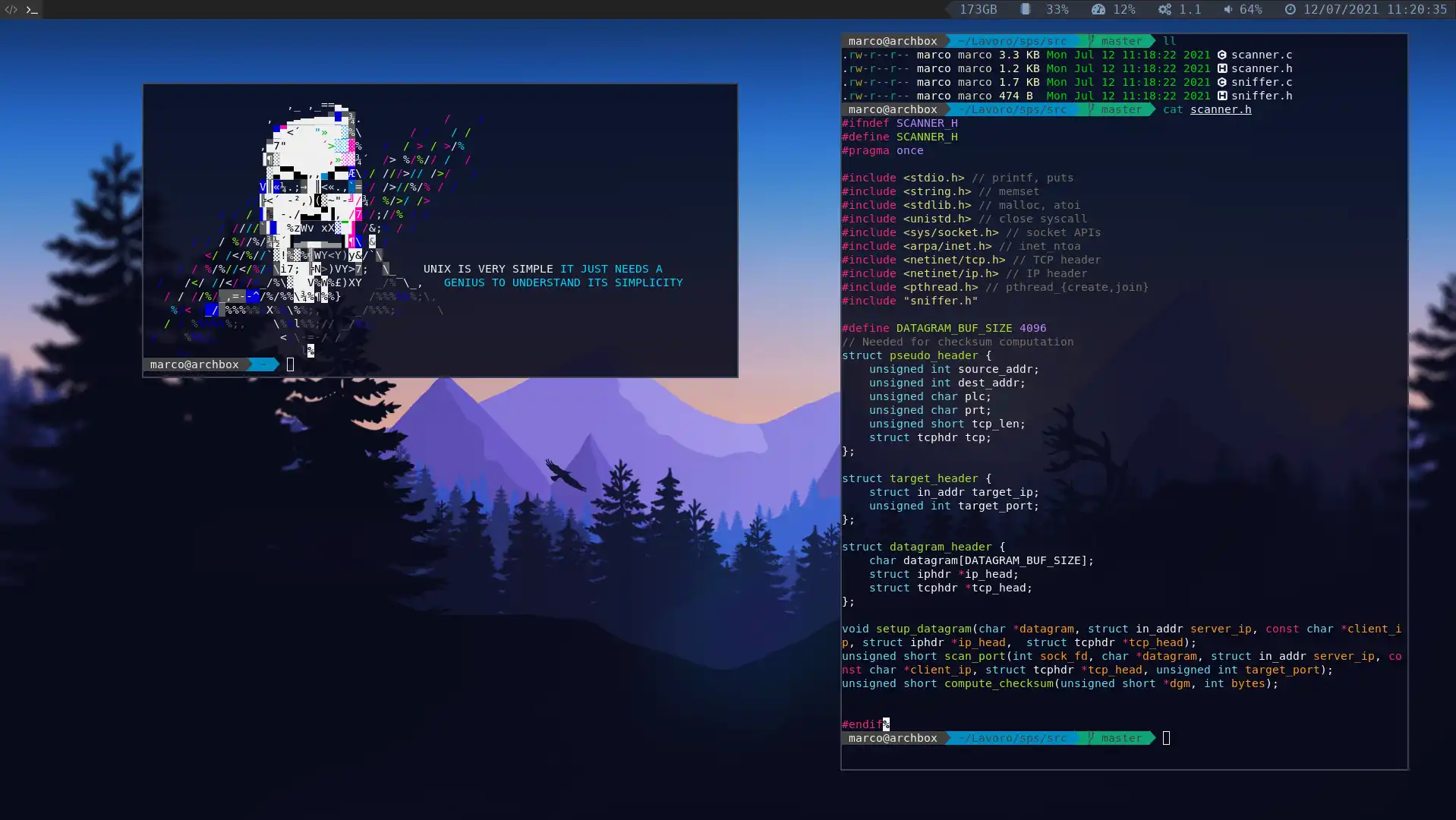Install Arch Linux w/ LVM + LUKS + Systemd-boot

In this guide we will see how to install Arch Linux on UEFI AMD64 system with LVM and LUKS. Please, do not use it as a replacement of the arch wiki, instructions here get outdated pretty fast and while they were correct at the time of writing, I cannot guarantee that they will stay correct in a year or two.
Download ISO Image
First, we need to download the live ISO of archlinux from official website, then flash to a USB drive with:
sudo dd if=/path/to/liveimage.iso of=/dev/sdX status=progress
Networking
Let’s assume we are on a wired connection, thus we just need to obtain an IP address using
dhcpcd
To see if network is fully working, try to ping google:
ping google.com
Finally, sync system clock
timedatectl set-ntp true
Partitioning
Now we need to create some partitions. We will create two physical partitions of the following size:
| Partition | Size |
|---|---|
| EFI | 500 MiB |
| LVM | 465 GiB |
To create the boot partition, type
mkfs.vfat -F32 /dev/nvme0n1p1
After that, we need to encrypt the disk using LUKS:
cryptsetup luksFormat /dev/nvme0n1p2
You will be asked to provide an encryption password. Be sure to memorize this password since there’s no way to decrypt the hard drive if you lose it.
After that, let us decrypt the disk:
cryptsetup luksOpen /dev/nvme0n1p2 luks
LVM Configuration
Now it’s time to create the physical volume:
pvcreate /dev/mapper/luks
and the volume group
vgcreate vg0 /dev/mapper/luks
Now we can create the virtual volumes!
lvcreate -L 16G vg0 -n swap
lvcreate -L 128G vg0 -n home
lvcreate -l 100%FREE vg0 -n root
Finally, we need to format these partitions:
mkswap /dev/mapper/vg0-swap
mkfs.ext4 -L "Arch Home" /dev/mapper/vg0-home
mkfs.ext4 -L "Arch Root" /dev/mapper/vg0-root
At the end you should have the following partitions:
| Partition | Size |
|---|---|
| LVM | 465 GiB |
Bootstrapping
Now we are ready to install Arch Linux base system using
pacstrap(8) command. let’s mount partitions with
mount /dev/mapper/vg0-root /mnt
mkdir -p /mnt/{boot,home}
mount /dev/mapper/vg0-home /mnt/home
mount /dev/nvme0n1p1 /mnt/boot
swapon /dev/mapper/vg0-swap
then
pacstrap /mnt base base-devel vim lvm2 linux-lts linux-firmware net-tools texinfo man-db man-pages sudo
System configuration
Now it’s time to configure installed system. let’s start by generating a fstab file with
genfstab -U /mnt >> /mnt/etc/fstab
Now let’s change the root path to the new system
arch-chroot /mnt
Enable network
To enable network at boot time, type
systemctl enable dhcpcd
Timezone
Set your local timezone with
ln -sf /usr/share/zoneinfo/Europe/Rome /etc/localtime
Locale
Edit /etc/locale.gen and and uncomment your locale, for instance:
it_IT.UTF-8 UTF-8
it_IT ISO-8859-1
then run
locale-gen
Configure /etc/locale.conf with
locale > /etc/locale.conf
And edit it according to your needs.
Hostname
echo "archbox" > /etc/hostname
Initramfs
Now we need to configure the initram file system to load LVM and LUKS modules before loading the kernel.
vim /etc/mkinitcpio.conf
HOOKS="base udev autodetect modconf block keyboard encrypt lvm2 filesystems fsck"
Edit the HOOKS variable and add
encrypt lvm2 after keyboard.
To enable support for NVMe drives at boot time,
add the following entry to the MODULES variable:
MODULES=(vmd)
Finally, regenerate all initram file systems with
mkinitcpio -P
User
First, let’s set a password for the root account with
passwd
And then add a user account with
useradd -m -G wheel,video,audio,disk,network,system,users -s /bin/bash <your_name>
To add an unrecognized user group, type
groupadd <group_name>
Finally, give your user superuser access through sudo by editing sudoers file(visudo) and by adding
$wheel ALL=(ALL) ALL
Bootloader
The last step of the installation process is to install the bootloader. In this guide, we will systemd-boot.
bootctl --path=/boot install
Now we need to edit /boot/loader/loader.conf
and add the following content
default arch-lts
timeout 3
editor 0
Then, let’s add a new entries called /boot/loader/entries/arch-lts.conf
with the following content:
title Arch Linux(LTS)
linux /vmlinuz-linux-lts
initrd /initramfs-linux-lts.img
options cryptdevice=UUID=<uuid_of_nvme0n1p2>:luks root=/dev/mapper/vg0-root rw
To retrieve the UUID of your partition, type
blkid --match-tag UUID -o value /dev/nvme0n1p2
Reboot
The installation is done. Type the following commands to exit from chroot, unmount partitions and reboot
exit
umount -R /mnt
reboot